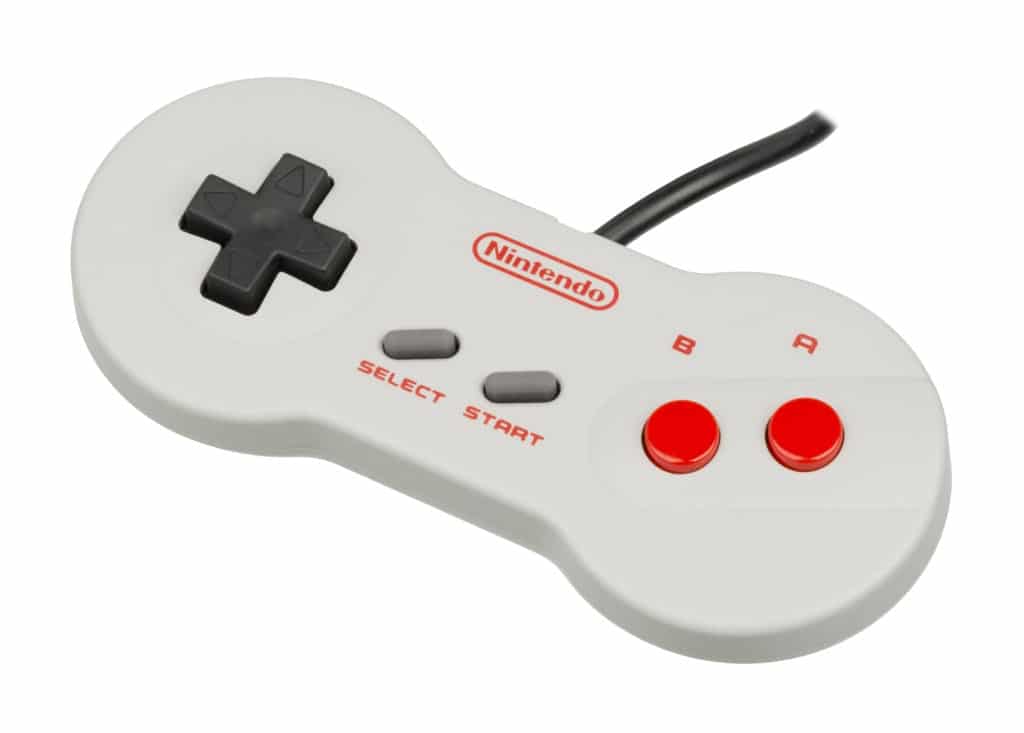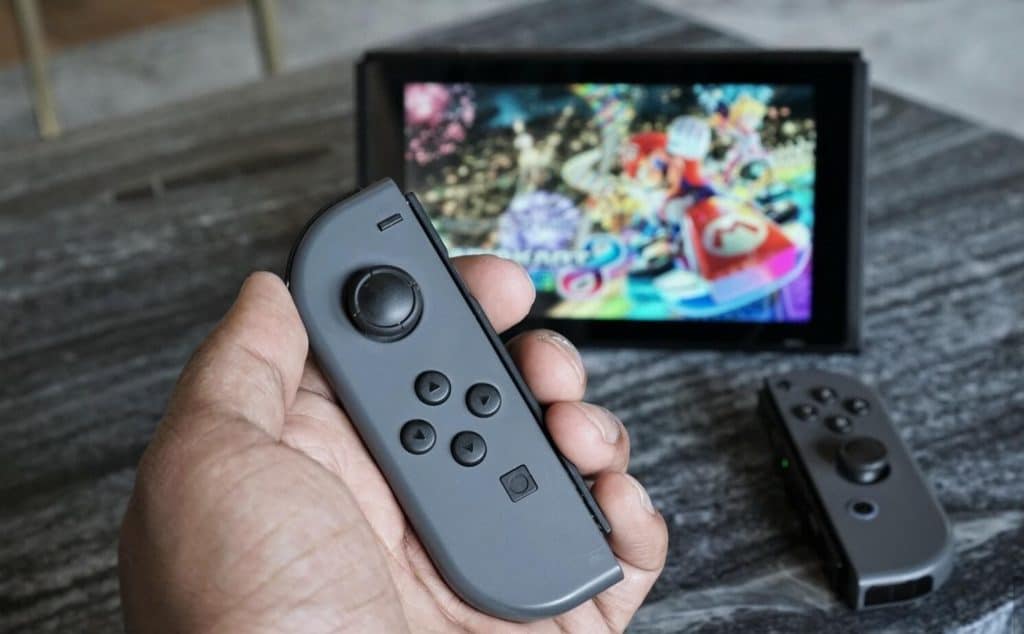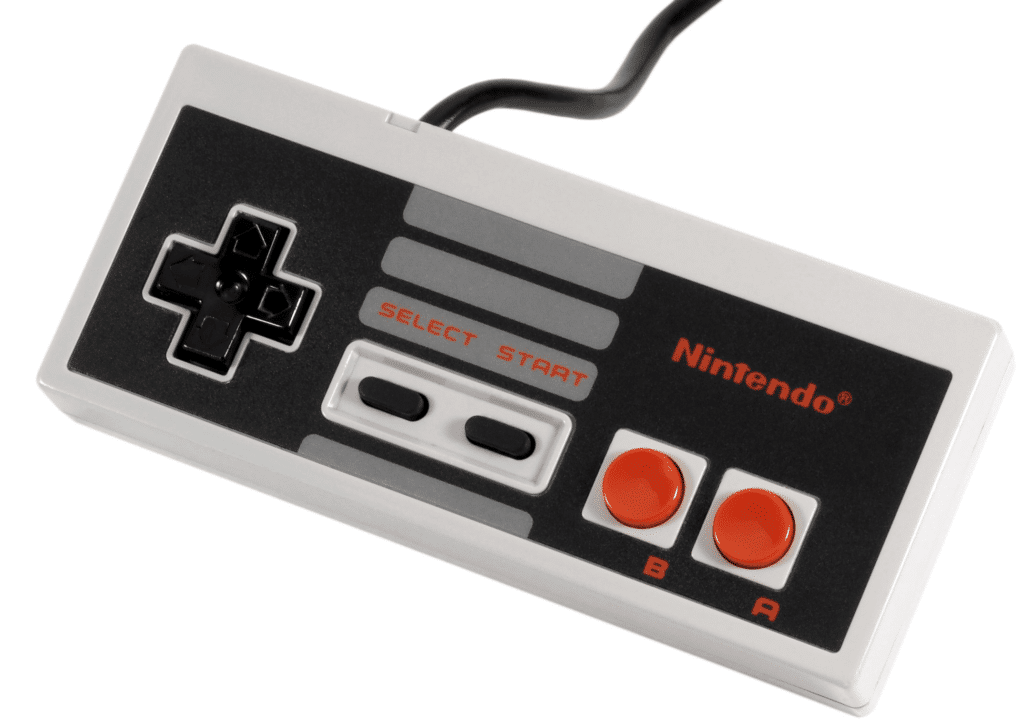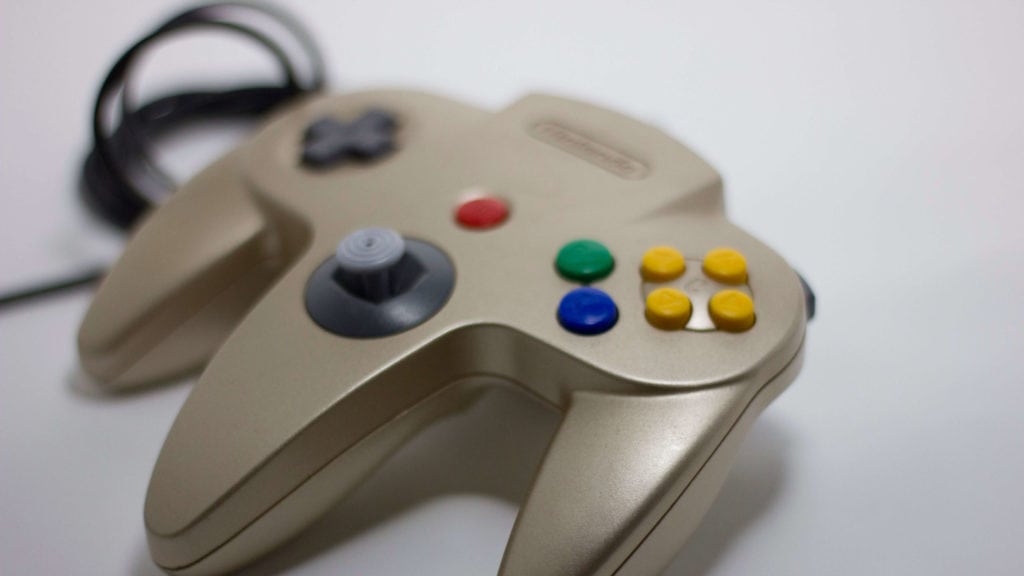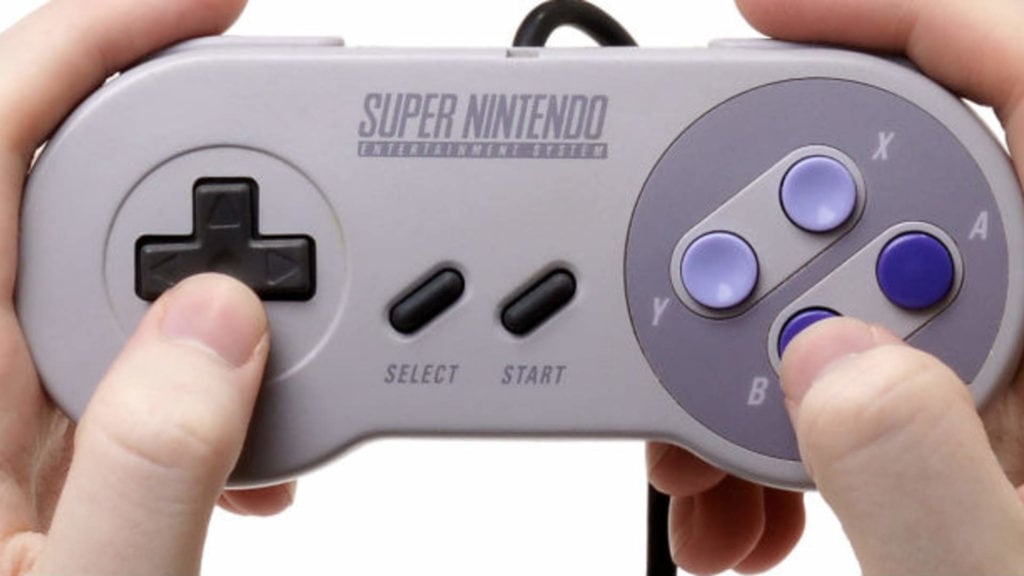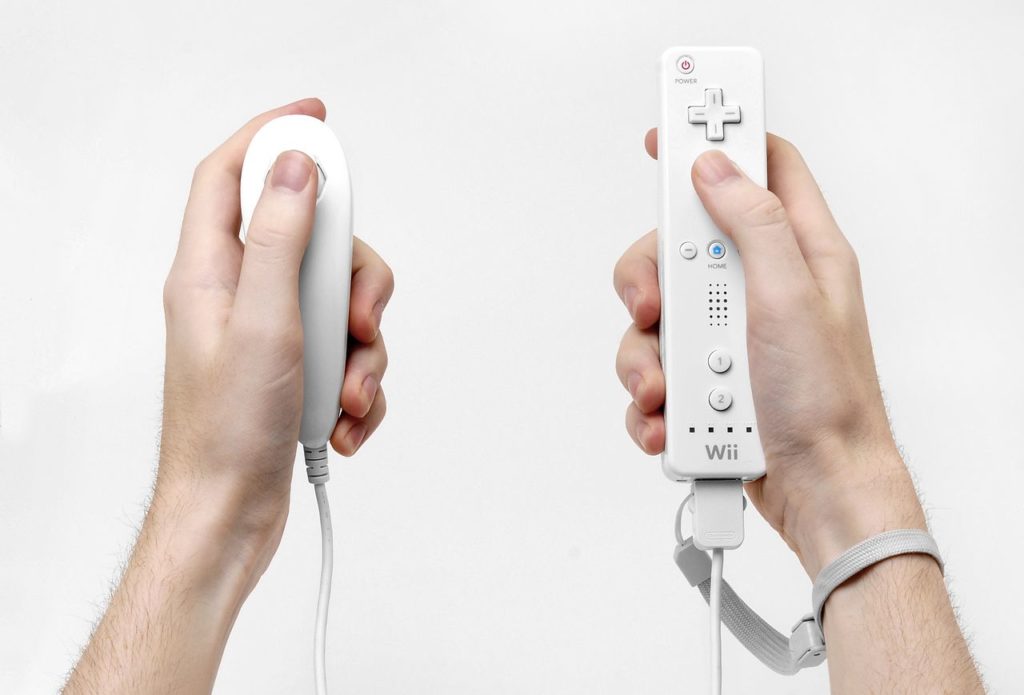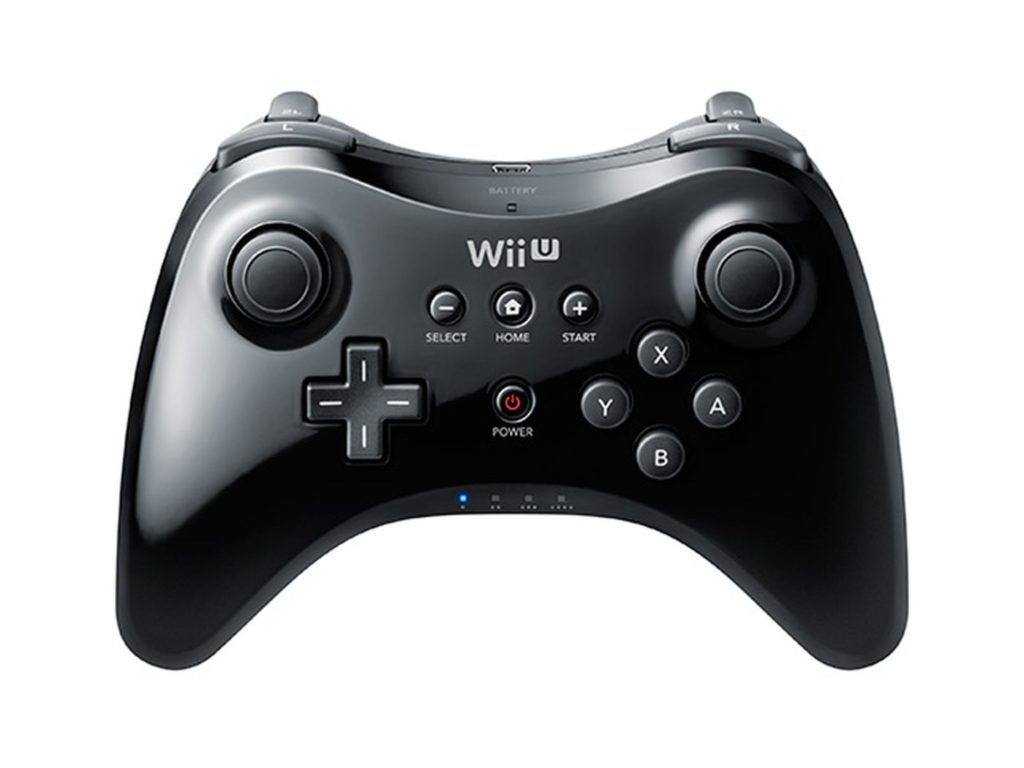–Steve Maraboli
Controllers are an integral part of any console – why without them you’d simply not be able to play the games you know and love. Over the years, controllers have adapted and evolved, catering to the technological advances that have come with newer consoles. These technological advances have also benefited the controllers themselves – adding more buttons, functionality, bells and whistles with the release of each new console.
Nintendo’s first foray into controller design was with the release of the NES, their first home console in 1983. Since then they’ve built on the foundations the NES control offered, refining and honing their controller design with each release – some of their slightly older controllers have even stood the test of time, and hold up even by today’s standards. More modern Nintendo controllers have created and developed new methods of playing video games. From the motion-sensing Wiimote, to the HD rumble of the Joy Cons, Nintendo have always been pioneers of controller technology and design – pushing the boundaries and limitations of their console’s controllers. Common controller features you see today, like the joystick, were first utilised by Nintendo, which even forced Sony to re-release their PS1 controller back in the 90’s – twice.
With each Nintendo controller offering something different, I wanted to look at what makes them so great. Whether it’s the button layout, ergonomic shape, or functionality that heightens the immersion, each of these controllers have their strengths (and some weaknesses). Here’s my Top 10 Nintendo Controllers.
Did You Know?
- The N64 controller was the first to use a joystick.
- It also first utilised rumble, via the Rumble Pack, now a common feature in all gaming controllers.
- Nintedo’s Wiimote Plus was initially plugged into the standard Wiimote before it became built-in as standard.
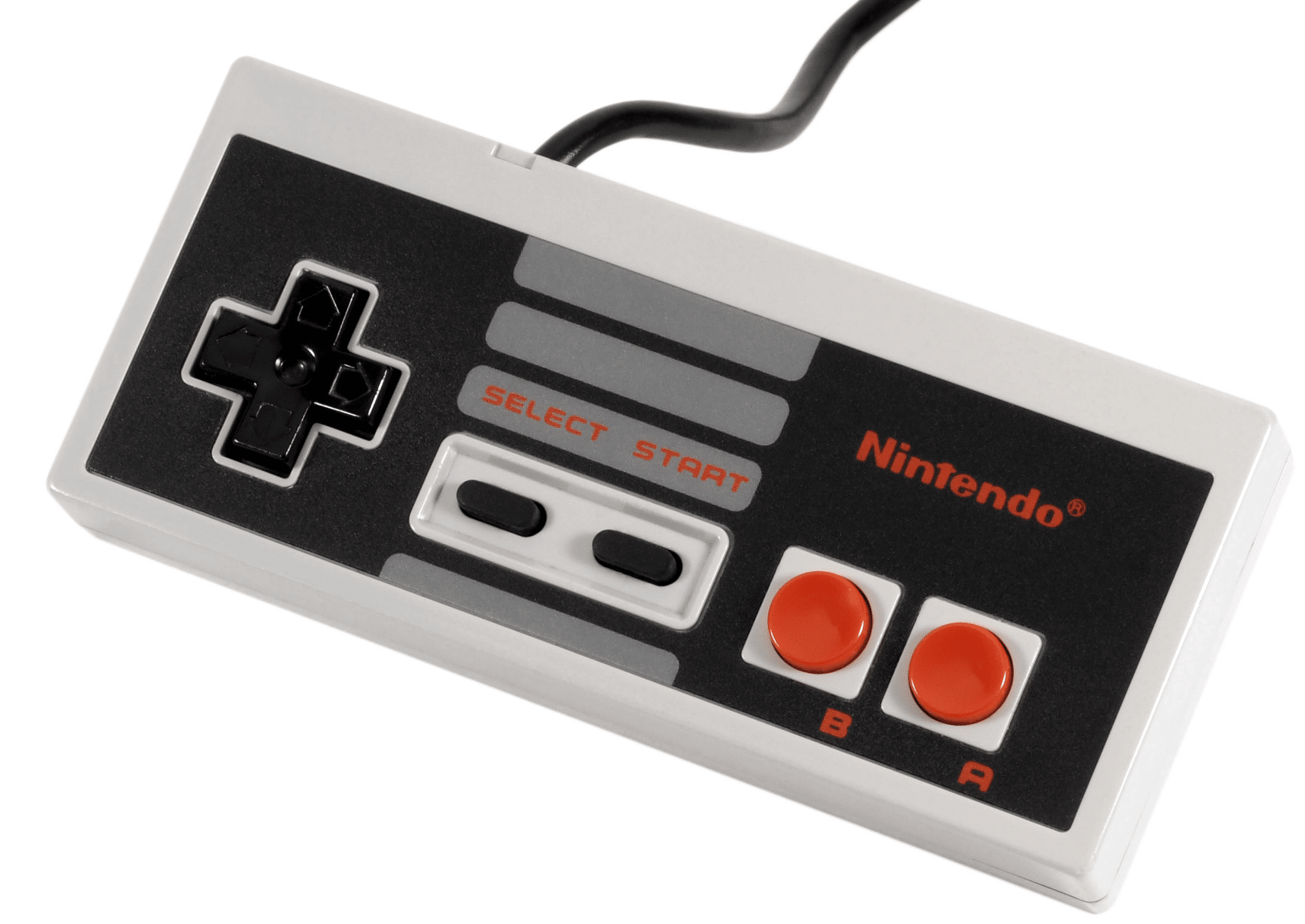
10) NES
The NES controller was the first ever home console controller designed and released by Nintendo. Heavily influenced by their prior handheld Game & Watch devices, the NES controller was a strong start from the game industry giants. Simplistic in its layout, the controller featured a directional pad (or d-pad), plus an A & B button. There’s nothing inherently bad about the NES controller, and I really love the face pattern design that was on the controller as standard – something you don’t see anymore unless you fork out for “shells”. However, there’s a reason you don’t see rectangular shaped controllers anymore and that’s purely down to the pursuit of pure ergonomic perfection. The corners can be a hindrance for larger hands – but this small gripe doesn’t take away from the fundamentals this controller put in place for all future iterations to build upon!
9) N64
The accolade of strangest controller shape, arguably, could go to the N64. The ‘M’ shaped controller is responsible for a lot of standard controller functionality you see today. Joystick? Rumble? Yep – the N64 pioneered both of these features, and the result is a wholesome and nostalgic controller. The prongs of the controller – although not everyone’s picnic – allow your left hand to focus on either the joystick or d-pad for movement, whilst the right hand takes care of the buttons. I also really love the addition of the Z button at the back of the central prong – integral for pulling off certain moves in games like Super Mario 64 and Banjo-Kazooie. Whilst the joystick was groundbreaking at the time, by today’s standards, it does feel a little clunky. The surface is also best for short stints of gameplay – I’ve painful memories of blisters and sores from some of the Mario Party mini-games that require you to spin the joystick in a circular motion like you’re possessed. Overall the N64 is a wonderful controller that was hugely innovative for it’s time!

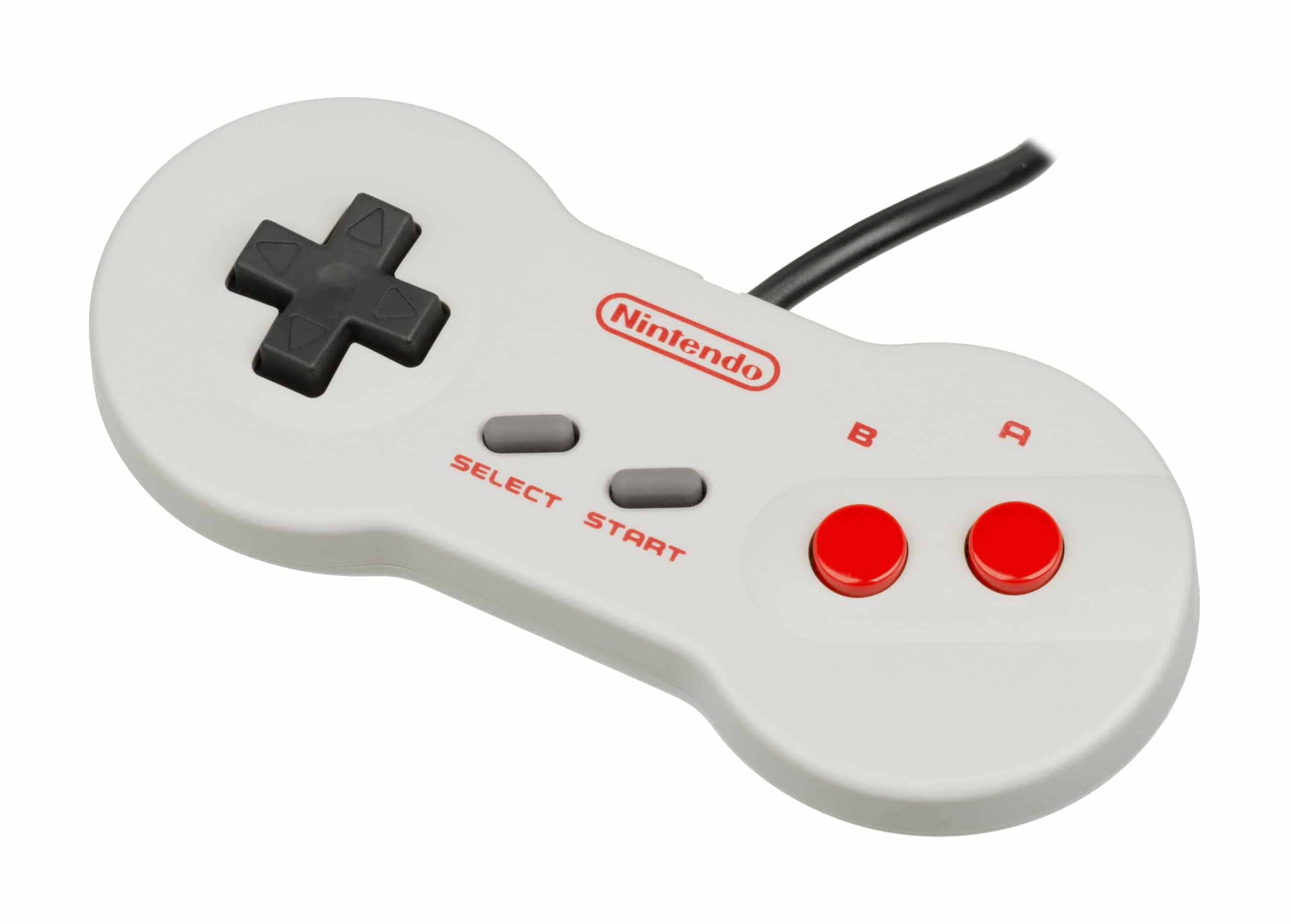
8) NES Dogbone
What happens if you take the strong foundations of the NES controller, but remove the somewhat uncomfortable rectangular shape – you get the NES Dogbone. Named due to the very apparent shape, this controller was released later in the NES’ lifespan when the “top-loader” version of the NES came to market. The dogbone gave the player a more ergonomic design, whilst maintaining the robustness of the buttons and d-pad offered by the original control. Although I always preferred the classic NES console over the newer version, I do favour the NES dogbone, and a combination of the two, for me, is the ultimate NES setup.
7) Joy Cons
I have a bit of a love hate relationship with Nintendo’s latest controller. On one hand, the Joy Cans are an incredible piece of tech. These two little gizmos can be used attached to the switch, together to offer a more traditional controller, or completely independently allowing you to get a 2-player game on the go. They’re built including NFC for amiibo and “HD” rumble, which is criminally under-used. However, the infamous “joy con drift” does exist – and affects both pairs of Joy Cons that I own. As they’re not overly robust, and somewhat delicate, Joy Con drift is where the joystick becomes misaligned and means your character will just drift in a direction, even though the joystick looks central. It’s a real shame – sure it’s the only issue with this otherwise fantastic controller – but it’s a persistent problem that Nintendo really needs to address.
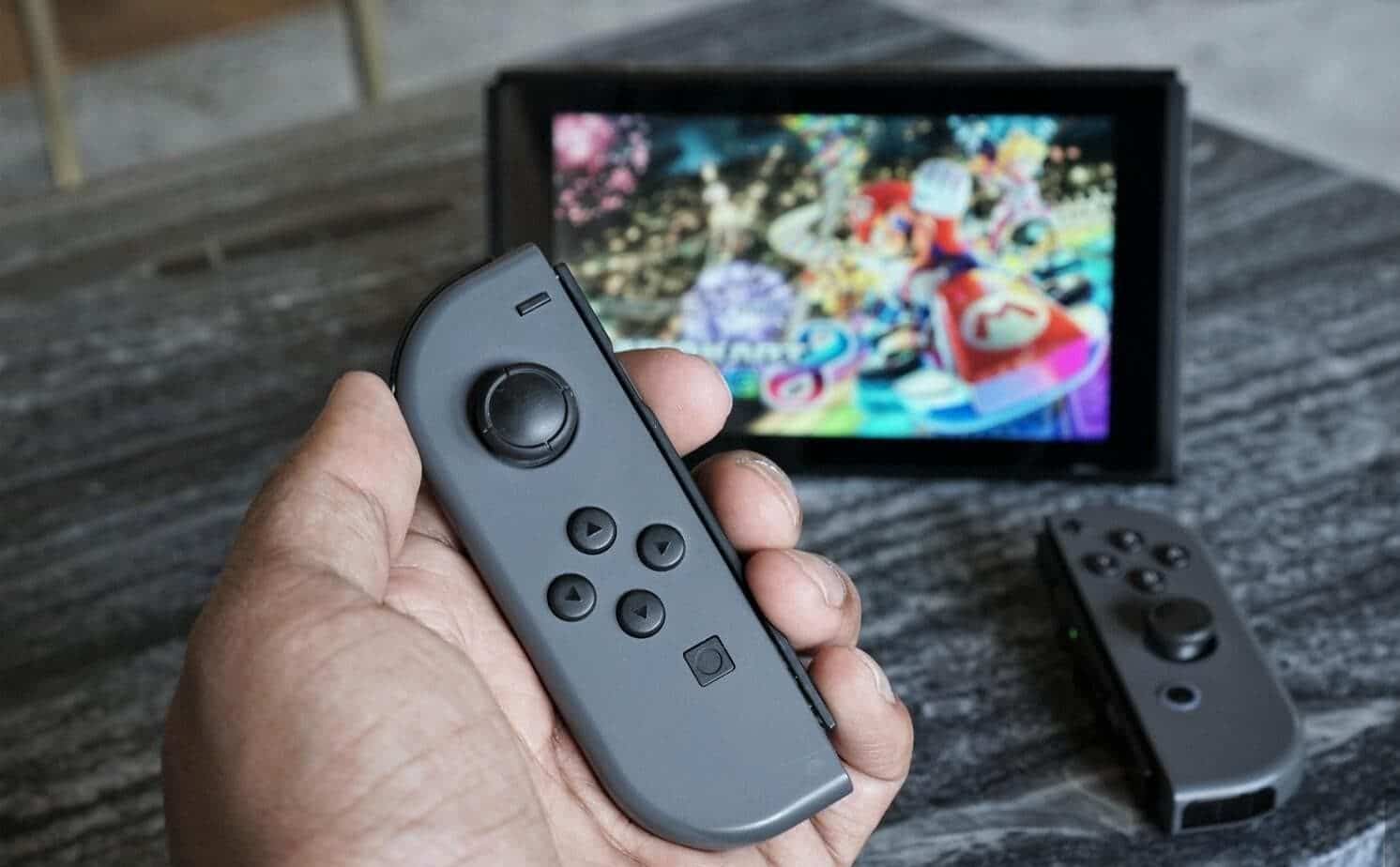

6) Wiimote & Nunchuck
Out of all the controllers on this list, none have shook up the traditional way to play video games as much as the Wiimote (& Nunchuck). The Wiimote, a simple baton, relies mostly on motion when it comes to playing video games. Playing Zelda? Just swing the Wiimote like it’s the Master Sword. Playing Mario Kart? Awesome – just tilt that bad boy until it’s horizontal and use it like a steering wheel. The Wiimote not only resonated well with gaming veterans, but helped introduce a whole generation of people who’d previously had zero interest in video games, into the pastime. Despite the simplicity and sparse amount of buttons, the Wiimote and Nunchuck are both super comfortable to hold – Nintendo managed to squeeze in some ergonomic design even with the reduced plastic! The Wiimote eventually released with “Wii Motion Plus” which fine tuned and amplified the motion sensing allowing you to be even more clinical with those Master Sword thrusts! I never tire of booting up the Wii and getting back into the swing of things with the Wiimote (see what I did there?).
5) Wii U GamePad
Seeing the Wii massively succeed due to how it’s played, Nintendo again decided to go with a quirkier controller for their next home console – the Wii U. The Wii U gamepad is a controller/tablet hybrid. Nintendo built upon the design and intention of the Wii U GamePad with the release of the Switch, but that doesn’t mean the Wii U GamePad doesn’t have its place in Nintendo history as one of the great controllers. Apart from the woeful battery life, the Wii U GamePad is a well built, smart piece of kit and packs in a whole arsenal of features – a 6.2’ touchscreen, camera, NFC functionality, headphone jack, motion sensitivity, microphone, TV remote, all your usual buttons (and more!). It’s super comfortable to hold – I even think it’s easier to use than the Switch in handheld mode – and feels incredibly robust. Having the touchscreen means that you can carry on playing a game, even if the TV’s being used, which was a real innovation at the time. Unfortunately the Wii U’s short life span and small library means that this beauty probably never reached its full potential and it still makes me feel a little sad thinking about ‘what could’ve been’ with the Wii U GamePad.
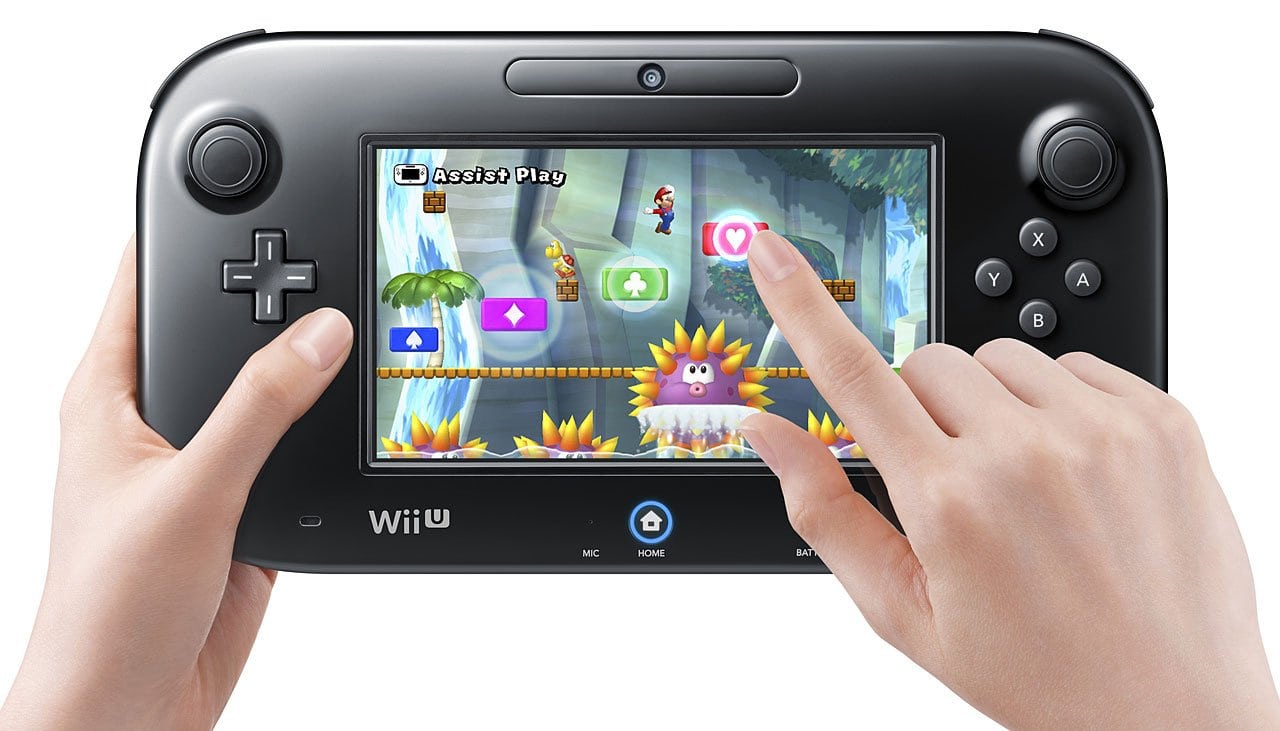
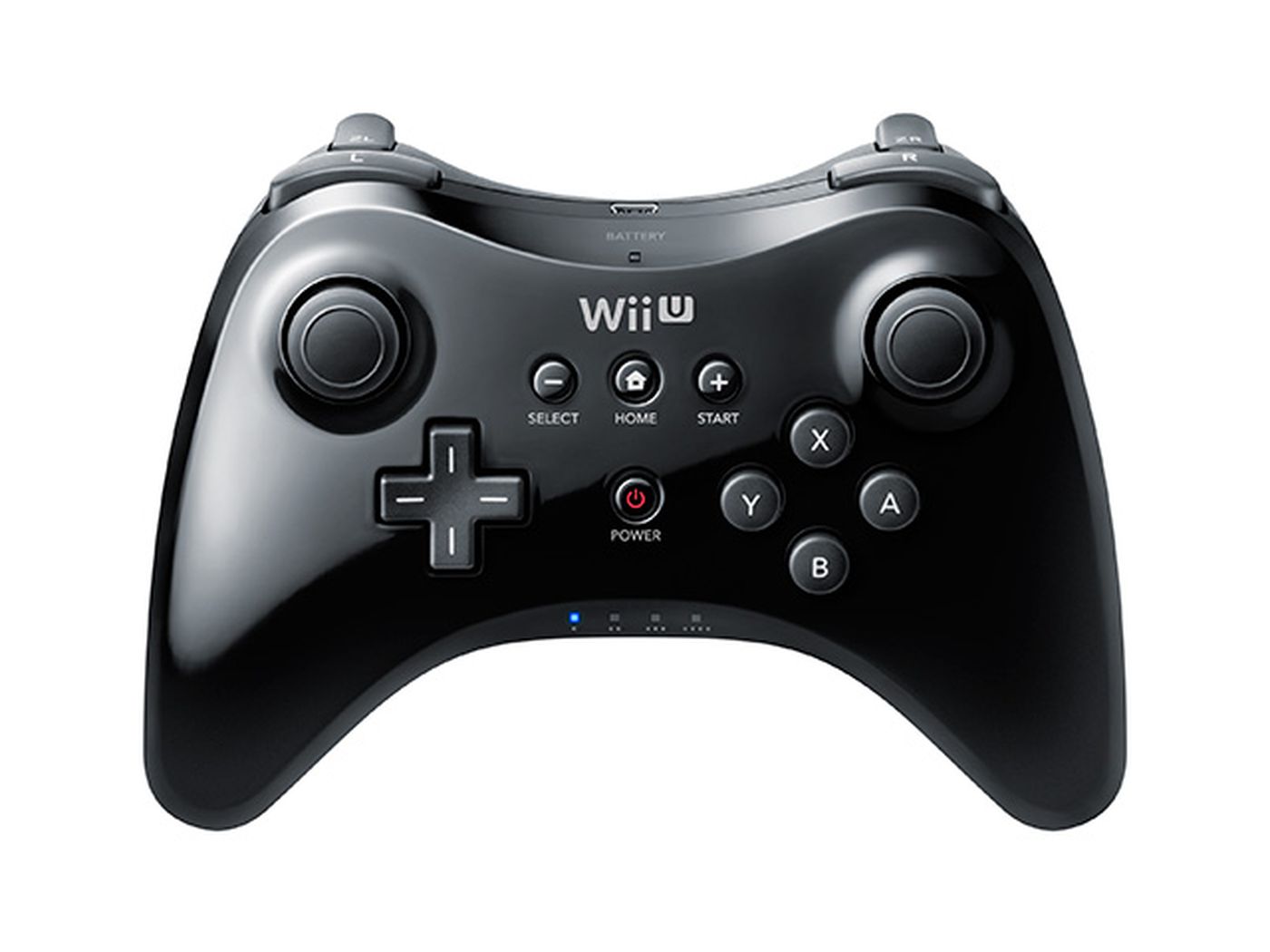
4) Wii U Pro
…that being said, if you wanted to play the Wii U with a more traditional controller, you can always use the Wii U Pro Controller. This controller does away with all the bells and whistles of the Wii U GamePad and focuses on supplying a pure wholesome gaming experience. It’s often overlooked as a controller as it was released with a pretty big price tag, but the curved, ergonomic shape makes this one of the more comfortable Nintendo controllers. Although I’m not a big fan of the shoulder buttons compared to the Wii U GamePad’s chunkier ones, it does everything else right – including the insanely large battery life of 80 hours. For games like The Wind Waker HD where the screen isn’t necessary, the Wii U Pro Controller absolutely shines as the number one choice.
3) SNES
The jump in controller design from the NES to the SNES is unfathomable. As Nintendo’s second home console, it’s unbelievable how much the controller design evolved – and you can tell there was a real focus on gameplay when Nintendo moulded this absolute peach. The SNES added two more face buttons and two shoulder buttons in comparison to it’s older sibling, but it’s the not so obvious changes that make this one stand out for me. The shape offers more comfort than the NES’ rectangular design, and slots perfectly into your hands. The X and Y buttons (for the version with the Purple/Lilac face buttons) are indented, meaning the tip of your thumb can bathe in the shallow dip and effortlessly still press the A and B buttons below without slipping. The d-pad was also a big step up, raised slightly more than the NES version, pressing the directional buttons felt more noticeable and committed. Both the NES and SNES controllers were released for the Switch’s Online libraries and really, it’s absurd that I don’t have them.
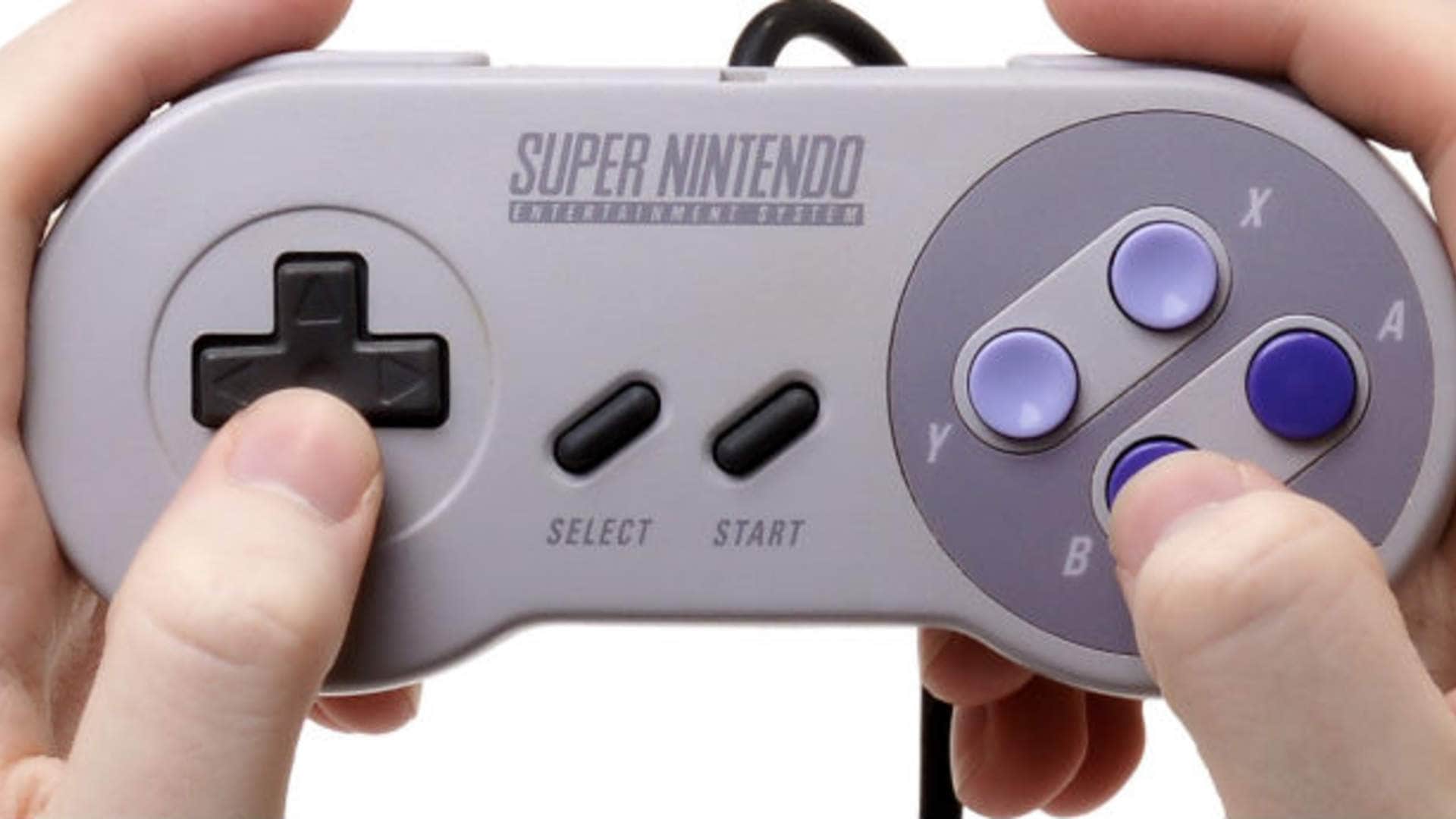

2) Switch Pro
Just missing out on the top spot is the wonderful Switch Pro Controller. Whenever I’m playing my switch, 99% of the time, I’m using this bad boy. No joy con drift and no hand cramp, the Switch Pro Controller not only moves my character when I want it to, but is wonderful to hold. The rubberised hand grips means the controller isn’t slipping all over the place whilst you’re playing – and you’ll be playing for a long time thanks to the 40 hour battery life (which charges very quickly through the type C adapter). The only thing holding back the Switch Pro Controller from sheer perfection is the d-pad, which sometimes just decides not to register, but hardly any games use the d-pad, so it’s not something I notice, or am affected by often. A controller that is perfect however…
1) GameCube/Wavebird
OK, you probably saw this one coming – I said in my Top 10 GameCube Games blog that the GameCube is my favourite console. So, it’ll be no surprise that my favourite Nintendo controller of all time is the GameCube’s. Wired, but also wireless thanks to the WaveBird, the GameCube controller is the epitome of great design and ergonomic comfort. No other controller from any other console fits as warm and snuggly in my hands as this one. The grips are moulded to the perfect shape, whilst the shoulder buttons (oh the shoulder buttons) are curved grooves that sensuously allow your fingers to rest on them. The buttons aren’t just four same sized circles – the central and most used A button is the largest – if you’re going to be pressing that one the most, why not make it the biggest? The other buttons, although smaller, are well located around the A button in support, but still have a key role to play. The X & Y buttons especially are shaped based on their position, as if in the A button’s gravitational pull. They’re also one of the most colourful Nintendo controllers – whilst the controllers themselves come in Purple, Black, Orange and more, there’s flashes of Red, Green, Yellow and Purple, just from the buttons. As you’ve guessed, I don’t have a bad thing to say about the GameCube controller and if I could plug it into every console I own, I’d be a very content man.
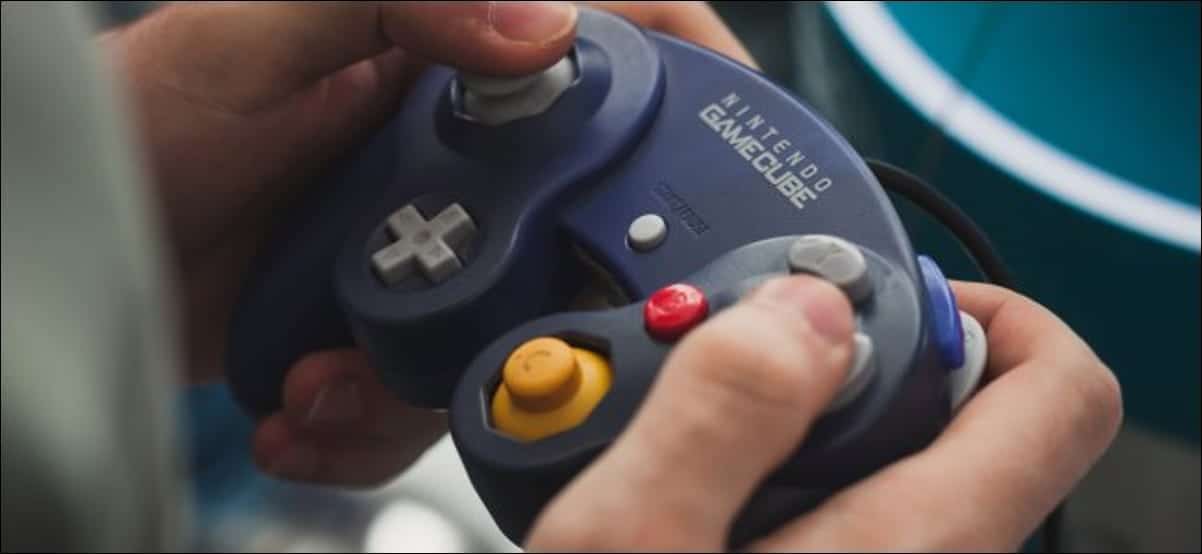
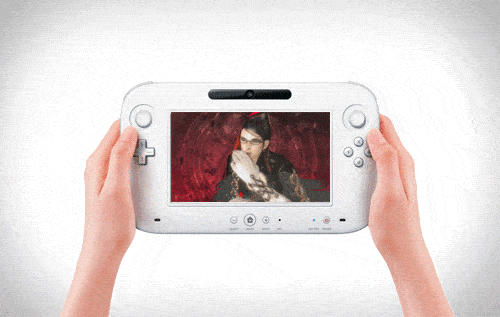
The boundaries of what controllers can do have been pushed and pushed over the years – especially by Nintendo who focus on the uniqueness of playing games rather than just trying to heighten graphical and processing power. This focus has given us stand out ways to play games from the Wiimote to the Wii U GamePad. But, Nintendo have shown that when they do create a traditional controller, they’re more than capable of producing a memorable masterpiece. Who knows what completely new concept they’ll come up with for their next console controller!


